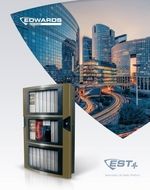Edwards
EST4 is the premier emergency communications system from EDWARDS.
Featuring a whole new network architecture, EST4 makes fire alarm, mass notification, and building integration easy to implement, quick to service, and secure in the face of today's cyber threats.
It provides systems engineers with the tools they need to create projects that exceed expectations and have plenty of room to grow, all while respecting facility budgets and construction schedules.
The result is an emergency communications system equally suited to new and retrofit projects; a platform that keeps property safe and steers people clear of dange
Key Features
- Flexible IPV6 network design. Can operate in Class B, A, X, N or full mesh using fiber, Ethernet or copper wiring.
- Firewalls - The EST4 proxy firewall uses Advanced Encryption Standard (AES) encryption and secure protocols making it FIPS Pub 197 certified. The FIPS, Federal Information Processing Standards, are the most current and most advanced encryption protocols administered by the National Institute of Standards and Technology (NIST).
- On-board Webserver Remote device-independent access to system status reports.
- Built-in E-mail and E-mail-to-SMS Messaging Instant notification of specific event types sent to appropriate personnel.
- Large Full-color LCD Touch Screen with Tactile Buttons Fast, intuitive access to service and responder functions.
- Five-color LED Indicators System status at a glance, select the color needed during programming, reduces replacement part inventory, maximizes use of available infrastructure.
- Network data, audio data, and telephone data share a single twisted pair or single fiber strand Up to 75 percent less cabling, substantial cost savings in material and labor.
- Backwards Compatibility with EST3 Wiring, devices, and most local rail modules are backward compatible, providing easy migration paths, economical transition to new technology.
- Existing Systems Supporting only Network Data can also Support Voice Audio Upgrades add value and extend capabilities in retrofit situations.
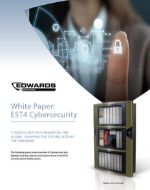
White Paper
Cybersecurity in commercial fire alarm: Shapping the Future, Setting the StandardHow To
Silence
In order to silence the EST4 fire alarm system you need to determine if you will be performing an Alarm Silence or a Panel Silence.
Panel Silence
Panel silence is performed when the annunciator or main fire alarm panel are beeping. The beeping of the panel is local to either of these devices and there are no lights or horns generating noise throughout the building. This local beeping means there's a component that's currently in trouble. To silence the local beeping of the panel simply press the Panel Silence Button. When this button is pressed the green led next to the button will light up and the panel will stop making the sound. Please note that in the event new trouble conditions are generated by the panel, the local beeping will begin again and building personal will need to silence the panel once more. Once the panel has been silence make sure to contact us to schedule a service technician to further investigate the issue with your system.
Alarm Silence
Alarm silence is performed when you need to silence the fire alarm system due to an alarm condition being detected. During an alarm conditions the strobes and horns/speakers in the building will be active. Before performing the alarm silence for the building, security or maintenance personal should verify the alarm condition displayed on the panel, by investigating the physical location where the event is being reported. Once the event is confirmed as a false alarm the building personal can press the Alarm Silence button. This will turn off the horn/speakers throughout the building, but the lights will continue to flash.
Reset
Panel reset is performed when you want the system to cycle through all devices and verify the states. This is typically performed after an alarm condition, once the device that triggered the event has been reset. For example if a tenant activates a pull station in the building, maintenance personnel will need to reset the pull station back to the original position before using the reset function. Once all devices are set to the original state simply press the Rest button, the depending on the size of the system it might take a few minutes to receive the all clear. Once the system is clear all alarm audio and visual will be turned off in the building.
System On Test
Placing the system on test is usually performed when work is being done in a property that might accidentally trigger the fire alarm system in a building. While the system is on test if an alarm is triggered the horns/speakers and flashing lights will be triggered, but the fire alarm will not notify the fire department. So its crucial if a fire event occurs during a test period, personnel notify the proper authorities in case of an actual emergency. To place the system in test you will need your account number, password and central station phone number. When you speak to one of our representatives you will need to give them the amount of time to place the system on test.
Note there's a limit of 8 hours that a system can be on test.
Frequently Used Parts List
 202-7A-T 15/75 cd Synchronized Strobe, White. UL1971 Listed @ 15 cd (75 cd On Axis Per ADA/UL 1638), inchFIRE inch Wall Orientation. | 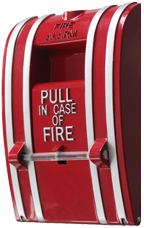 270A-SPO Pull Station, Noncoded, Break Glass, Metal, Single Pole, Open Circuit, Wire Leads. | 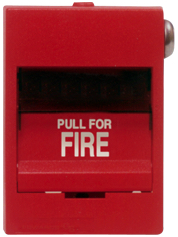 278B-1110 Pull Station, Noncoded, Double Action, Break Glass, Plastic, Single Pole, Open Circuit, Screw Terminals, Wire Leads. | 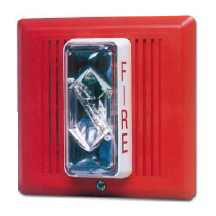 757-7A-SS70 15/75 cd Speaker/Strobe - 70V, Red. Strobe: UL 1971 Listed @ 15 cd (75 cd on-axis per ADA/UL1638), inchFIRE inch wall orientation. |  757-7A-T 15/75 cd Temporal Horn/Strobe - 24 Vdc, Red. UL1971 Listed @ 15 cd (75 cd On Axis Per ADA/UL 1638), inchFIRE inch Wall Orientation. | 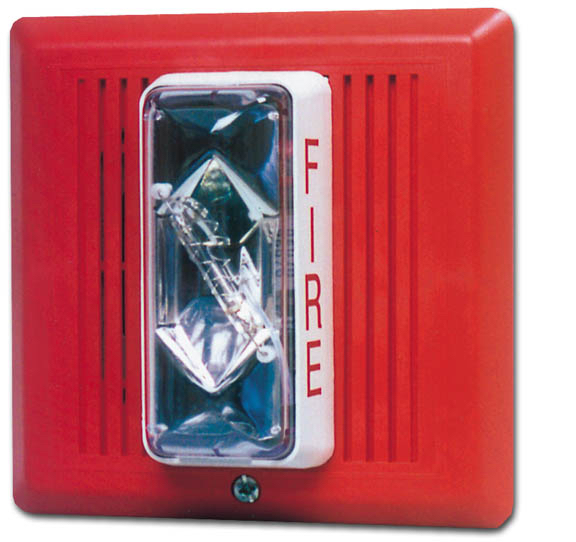 757-8A-RS70 110 cd Re-entrant Speaker/Strobe - 70V, White. Strobe: Meets sleeping area requirement. UL 1971 Listed @ 110 cd, inchFIRE inch wall orientation.. |  757-8A-T 110 cd Temporal Horn/Strobe - 24 Vdc, Red. UL1971 Listed @ 110 cd, inchFIRE inch Wall Orientation. Meets Sleeping Area Requirements. | 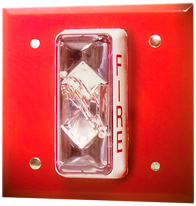 CS405-8A-T Strobe w/TB EST |  G1F-HD Multi-cd temporal horn-strobe, hi/lo dB - 24V, White w/FIRE. |  G1F-HDVM Multi-cd temporal horn-strobe, hi/lo dB - 24V, White. |  G1F-VM Multi-cd strobe - 24V, White w/FIRE. |  G1RF-HDVM Multi-cd temporal horn-strobe, hi/lo dB - 24V, Red w/FIREe. |  G4F-S7VM Speaker-strobe (70V), multi-tap, multi-cd, White w/FIRE. |  GCF-HDVM Ceiling mount horn-strobe, multi-cd (15/30/75/95cd), temporal hi/lo dB output, 24V - White w/FIRE. |  GCF-S7 Genesis Ceiling Speaker - 70V, FIRE marking, mounts to 4 inch square x 2-1/8 inch box. |  GCF-S7VM Genesis Ceiling Speaker-strobe - 70V, 15-95 multi-cd, FIRE marking, mounts to 4 inch square x 2-1/8 inch box. |  GCF-VM Genesis Ceiling Strobe - 15-95 multi-cd, FIRE marking, mounts to 4 inch square x 2-1/8 inch box. | 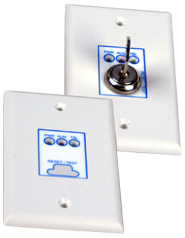 SD-TRK SD Remote Reset/Test, 2W/SIG. | 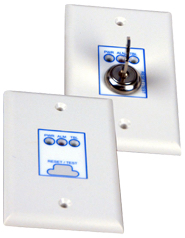 SD-TRK4 Duct Detector Accessory, Remote Test/Reset Station/Key. |  SIGA-270 Manual Pull Station - Single Action, 1-stage. | 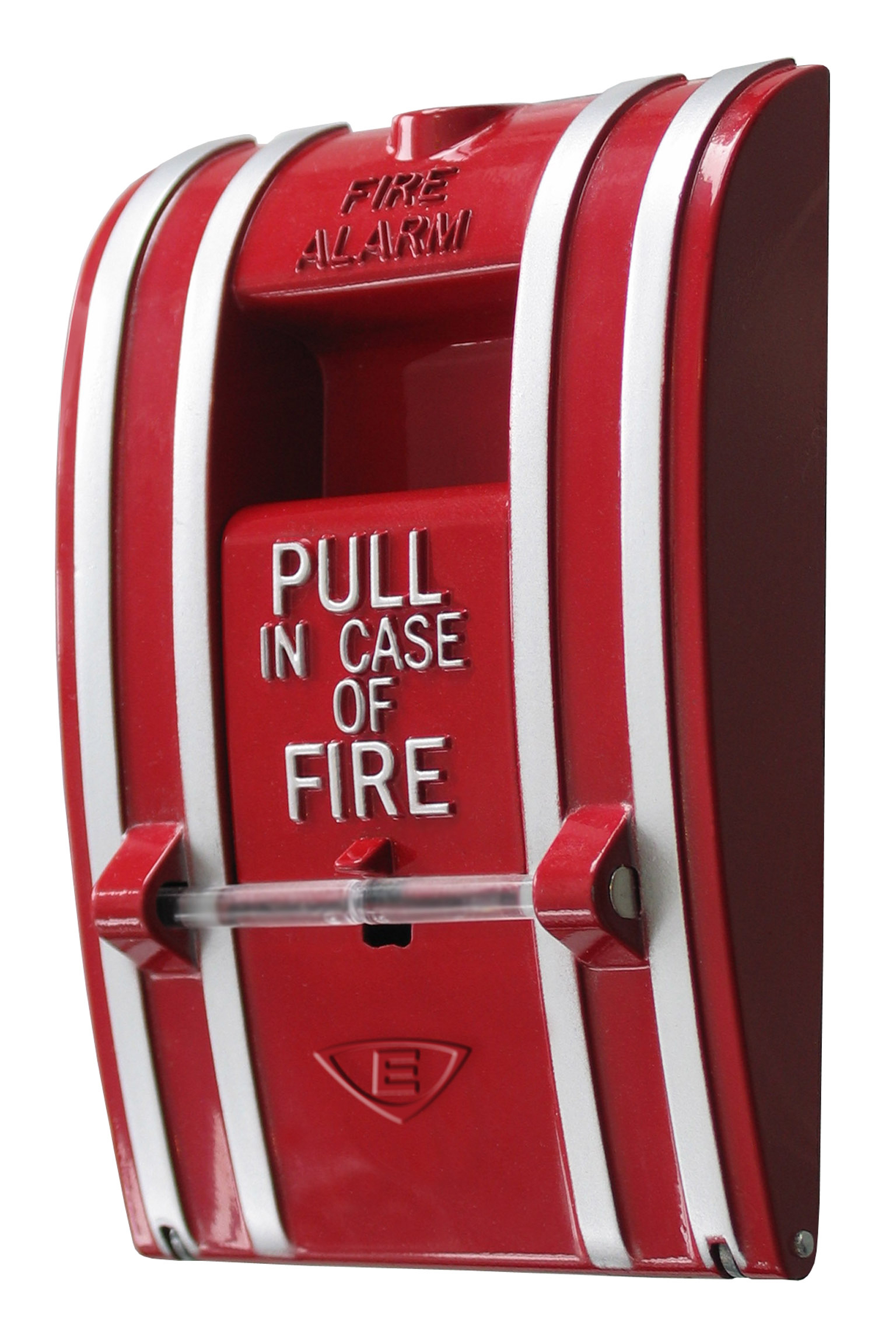 SIGA-278 Manual Pull Station - Double Action, 1-stage. |  SIGA-CC1 Single Input (Riser) Module. Features a built-in RING TONE generator; use for switching a single signal or audio circuit. |  SIGA-CC1S Single Input (Riser) Module with strobe synchronization output. |  SIGA-CT1 Single Input Module. Single circuit input module for use with Normally Open Contact devices. Four selectable personality codes for Alarm latching, or Alarm Delayed latching, or non-latching monitor or latching supervisory. |  SIGA-CT2 Dual Input Module. Two circuit input module for use with Normally Open Contact devices. Four selectable personality codes (on each circuit) for Alarm latching, or Alarm Delayed latching, or non-latching monitor or latching supervisory. |  SIGA-LED Remote Alarm LED. Use with -SB and -SB4 Standard Base only. |  SIGA-PS Intelligent Photoelectric Smoke Detector. |  SIGA2-PS Intelligent Second Generation Photoelectric Smoke Detector. |  SIGA-SD SuperDuct, Signature Series duct smoke detector. |  SIGA2-HFS Intelligent Second Generation Fixed Temperature Heat Detector - 135F. |  SIGA2-HRS Intelligent Second Generation Fixed Temperature / Rate-of-Rise Heat Detector - 135F, 15F per minute. |



